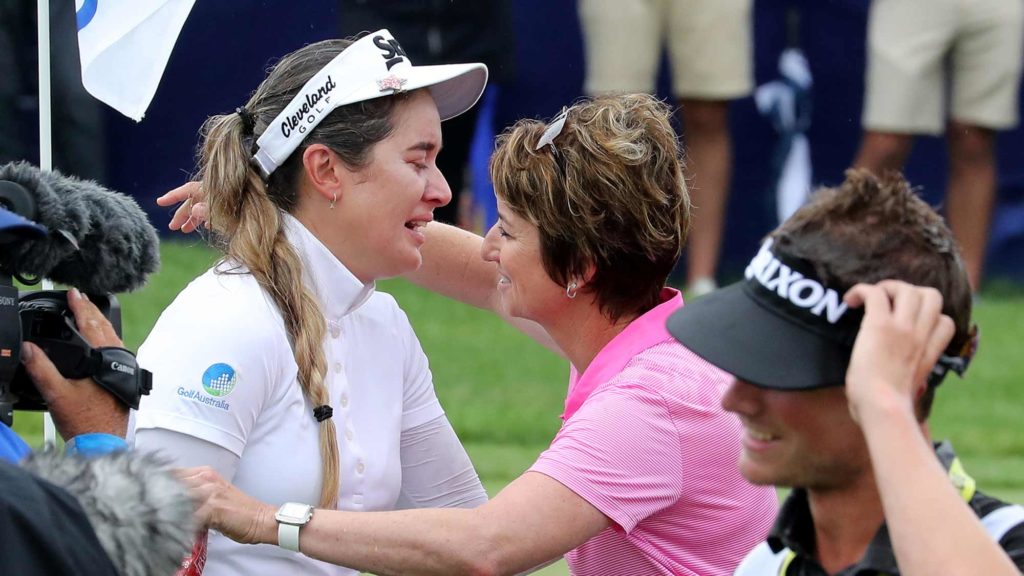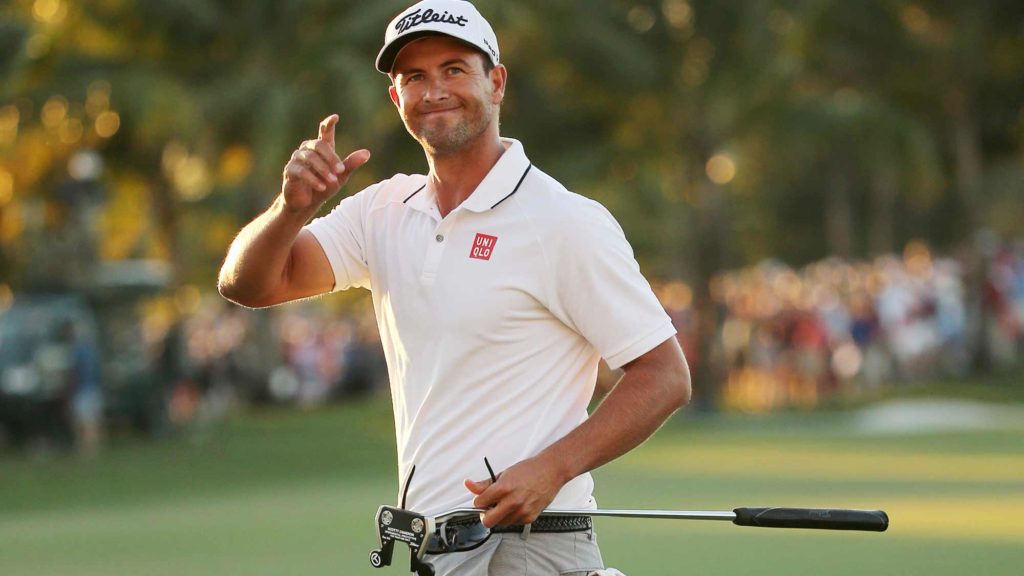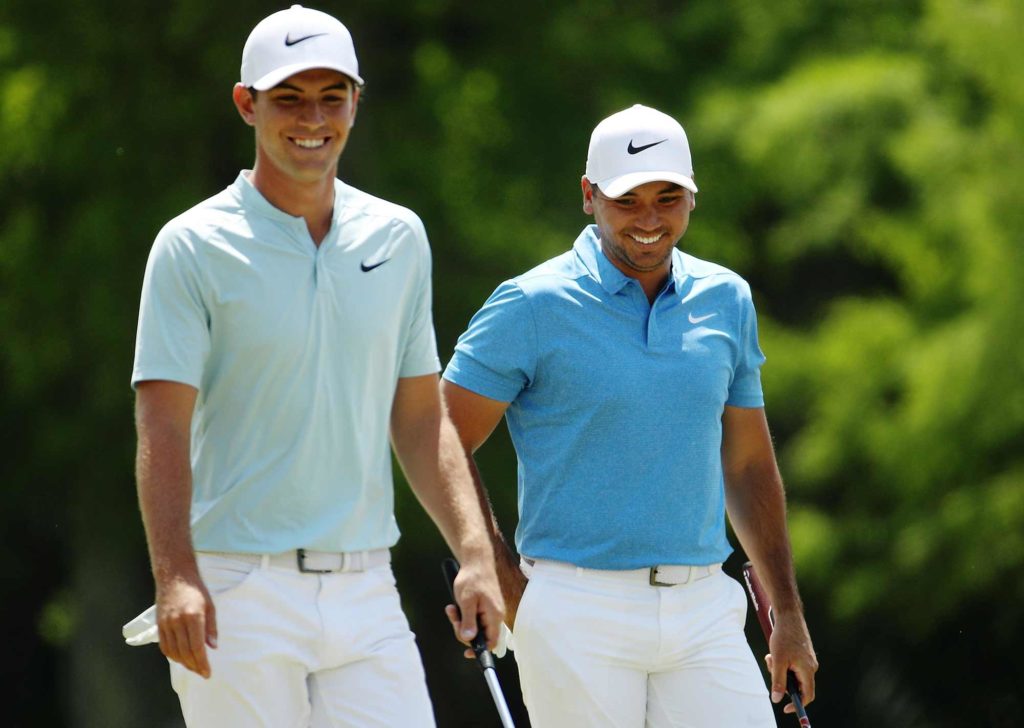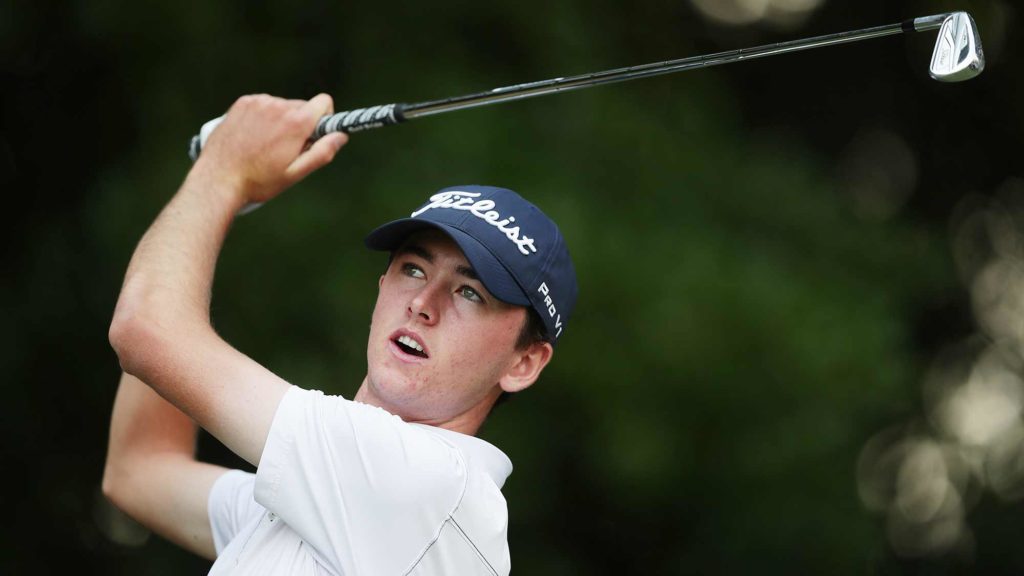Australian golf is experiencing a boom not seen since the Greg Norman days. But how do we keep it up?
It sounds like a prize on sale at a top-tier charity golf auction. Playing four rounds on world-renowned courses in the United States with one of the greatest players in the history of women’s golf. Tee-times at Pine Valley, Winged Foot, Westchester and Hidden Creek with seven-time Major winner, Karrie Webb.
That was the reality a few months ago for Sydneysider Grace Kim – one of Australian golf’s most exciting young prospects – who was cashing in her award as the winner of the Karrie Webb Series, Webb’s annual scholarship.
The only problem for 20-year-old Kim was working out how to pay Webb back for a trip like that. She couldn’t put a price on it, so it had to be a gesture.
“She was trying to buy me dinner, and I said, ‘No this is your trip. You earned it.’ But she insisted she had to pay for something,” Webb tells Australian Golf Digest.
“I told her she just has to pay it forward. When she gets the opportunity to help the next generation, that’s when you’ll have paid me back.”
Thinking about the next generation after Kim, who isn’t even old enough to drink alcohol in the US yet, seems a long way down the track. But World Golf Hall of Fame member Webb knows the current boom in Australian golf has been 10 years in the making. It’s a new dawn, but it won’t last forever unless plans are made. Here we take a look at exactly what those plans are.

A golden era beckons
On one weekend in July this year, it felt like the hard work Australian golf had put in during the past 10 years had paid off in the space of 48 hours. Sydney’s Cameron Davis earned a maiden PGA Tour win in Detroit, Michigan, while Victoria’s Lucas Herbert won the European Tour’s Irish Open only hours beforehand. Another Sydneysider, Steph Kyriacou, had won her second Ladies European Tour title the day earlier in The Netherlands. On the same weekend, star Queensland teenager Louis Dobbelaar won the historic North & South Amateur event in the US.
It was unprecedented, but it’s not the only success Australian golfers have had this year. Established stars Cameron Smith and Marc Leishman jointly won the Zurich Classic teams event on the PGA Tour in April. In July, Perth’s Min Woo Lee triumphed in a playoff at the prestigious Scottish Open on the European Tour only weeks before his sister, Minjee Lee, won her first Major at the Evian Championship. It’s been a sensational year, and it begs the question: is this the start of a golden age of Australian golf?
“I think so,” Webb says. “I think it was due; a lot of work has gone in by a lot of people. Now, there are lots of talented girls coming through. It’s satisfying to have known Minjee and Hannah [Green] as up-and-coming amateurs and then watch their careers blossom from my series to the LPGA Tour. Now, they’ve won LPGA Tour events and one Major each.
“They are the next generation of stars and I think young girls coming through are already looking up to Hannah and Minjee.”
On the men’s side, there are now eight players inside the world’s top 100 golfers – Smith, Leishman, Adam Scott, Lucas Herbert, Lee, Davis, Matt Jones and Jason Day.
The amateur stocks are incredibly healthy, too. Kim, who is on the cusp of turning pro, has won three professional tournaments in the US this year across several women’s developmental tours. Dobbelaar, meanwhile, is also on a long trip in the US that has already yielded victories at the Dogwood Invitational and the North & South Amateur. Dobbelaar’s coach, Grant Field, who also coaches three-time PGA Tour winner Smith, says it is an exciting time for Australian golf.
“If you look at the current stars that are established, they aren’t that old, either,” Field, who is also the Queensland state team golf coach, says with a laugh. “Cam is young, Jason Day is not old yet. You’ve got Min Woo, Lucas Herbert and Cam Davis and plenty of others. Elvis Smylie has played in a couple of events since turning pro and a lot of people are excited about him for good reason.
“But the amount of great young kids coming through, it’s just amazing. There are amateurs like Louis, but also Lawry Flynn and Jed Morgan and Grace Kim.”
Paying it forward
So how does the industry sustain this production line of bona fide talent? Webb says the key is encouraging the next generation of pros, like Greg Norman did for her. The Shark was a mentor for fellow Queenslander Webb as she ascended to the top of the women’s game.
“What is really great to see is I think all the girls are buying into the pay-it-forward mentality, which is what I’ve tried to do through the Karrie Webb Series and because Norman did something similar for me,” says the 41-time LPGA Tour winner.
“I felt like this scholarship was my way to pay it forward from Greg. Already, I’m seeing Hannah paying it forward by playing golf with young junior golfers in Perth where she’s from and that’s amazing. It’ll only make the game healthier.”
Field agrees, having seen his long-time student Smith pay for Queensland junior golfers to fly to Florida and spend a week with him playing, practising and training like a PGA Tour player.
“A few years ago, Louis and Jed were part of Cam’s program and went over to his house in Florida. They came back completely inspired to take their game to the next level,” Field says.
Adds 19-year-old Dobbelaar: “It was a dream come true to go over to Cam’s house and play golf with him; I realised what it takes to be a professional but also how to work hard and have a work-life balance.”
Informally, 2013 Masters champion Scott played numerous games of golf with juniors and amateurs last year when he was at home in Queensland for three months because of the COVID-19 shutdown. One of those was Smylie, who was still an amateur. “Playing with Adam was a massive experience for me and I took a lot away from it,” Smylie said at the time.

Taking the leap
The transition between amateur and professional golf – and between the lifestyle in Australia and the US, more specifically – is a crucial area Field says Golf Australia has had success in.
Golf Australia has a house in Orlando, Florida, that welcomes visiting members of the Australian golf scene, from amateurs to professionals, as well as coaches and support staff. Orlando is something of a mini-hub for Australians with experienced LPGA Tour player Sarah Kemp based there for several years now, while young pros Ryan Ruffels and Curtis Luck play out of the prestigious Isleworth Country Club. They regularly welcome fellow Aussie pros like Herbert to practise and play while in town.
The sense of community has been vital for young Aussies, says Field. “Supporting those kids when they turn pro in the early years with initiatives like the Golf Australia house has made the young players feel comfortable overseas,” he says. “These kids can suffer from homesickness, and having support while they try to take on the golf world is massive. If you look at the US college system, once a golfer turns professional, the support can be gone instantly if they aren’t a massive star. Golf Australia’s community there makes a huge difference.”

The funding discrepancy
Webb argues that a significant boost in government funding for golf, and the way funding is decided, could unearth more superstars. In Sport Australia’s 2021/22 Investment Allocation, golf was allocated only $1.75 million, with $650,000 put towards participation. Sport Australia’s allocations are largely based on the chances of that sport winning medals at the Olympics. Rowing received $9 million, sailing $8.6 million and water polo $3.7 million.
Those allocations don’t pass the ‘pub test’ when one considers Australian golfers have high chances of medalling in the men’s and women’s tournaments. But that’s not even the point, says Webb.
“I really wish more consideration was taken into what Australian golfers are doing internationally every week,” she says. “Australians are winning Majors and big tournaments across different golf tours on a regular basis. It’s frustrating because Australia punches well above its weight in golf globally and that should be recognised when deciding how the government funds it.”

Changing golf’s image
The pandemic was something of a blessing in disguise for Australian golf, at least for participation. Rounds are up given that golf was one of the few sports most people were permitted to play during the various lockdowns. A small number of newcomers have even stuck with the game.
To capitalise on this, Webb argues golf needs to revise its image to be more inclusive and welcoming. The 46-year-old makes a funny observation about how the golf industry views world No.28 Smith’s mullet haircut. Since growing out a mullet during the 2020 lockdown, Smith has become a media sensation for having a wild haircut that is all business at the front, party at the back. It certainly helps that he’s had success on-course with his new hairdo, finishing joint runner-up at the 2020 Masters at Augusta and winning his third PGA Tour title in April this year.
Webb feels golf is happy to celebrate Smith’s mullet and the attention it gets in mainstream sports media, but at the same time the game would frown upon the hairstyle for anyone other than Smith.
“At the grassroots level, we really need to change the culture and the image of golf a little bit,” Webb says. “I look at Cam Smith and I think how entertaining he is on TV, and he’s a great player. But if he walked into one of the top metropolitan clubs in Australia, I would guess he wouldn’t be made to feel very welcome with a mullet.
“Because he’s Cam Smith, he’d be fine. Some of the stereotypes that golf gets tagged with are deserved and I think we need to look at changing that moving forward and growing.”





